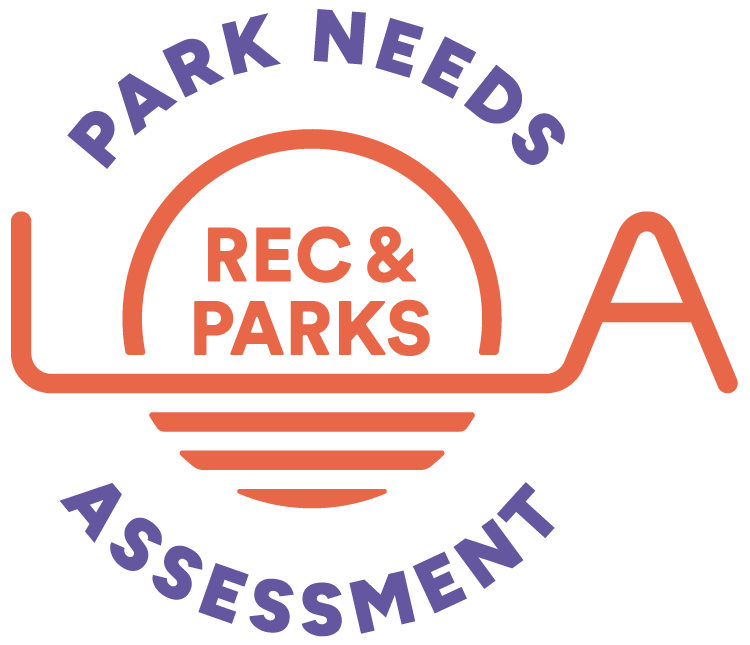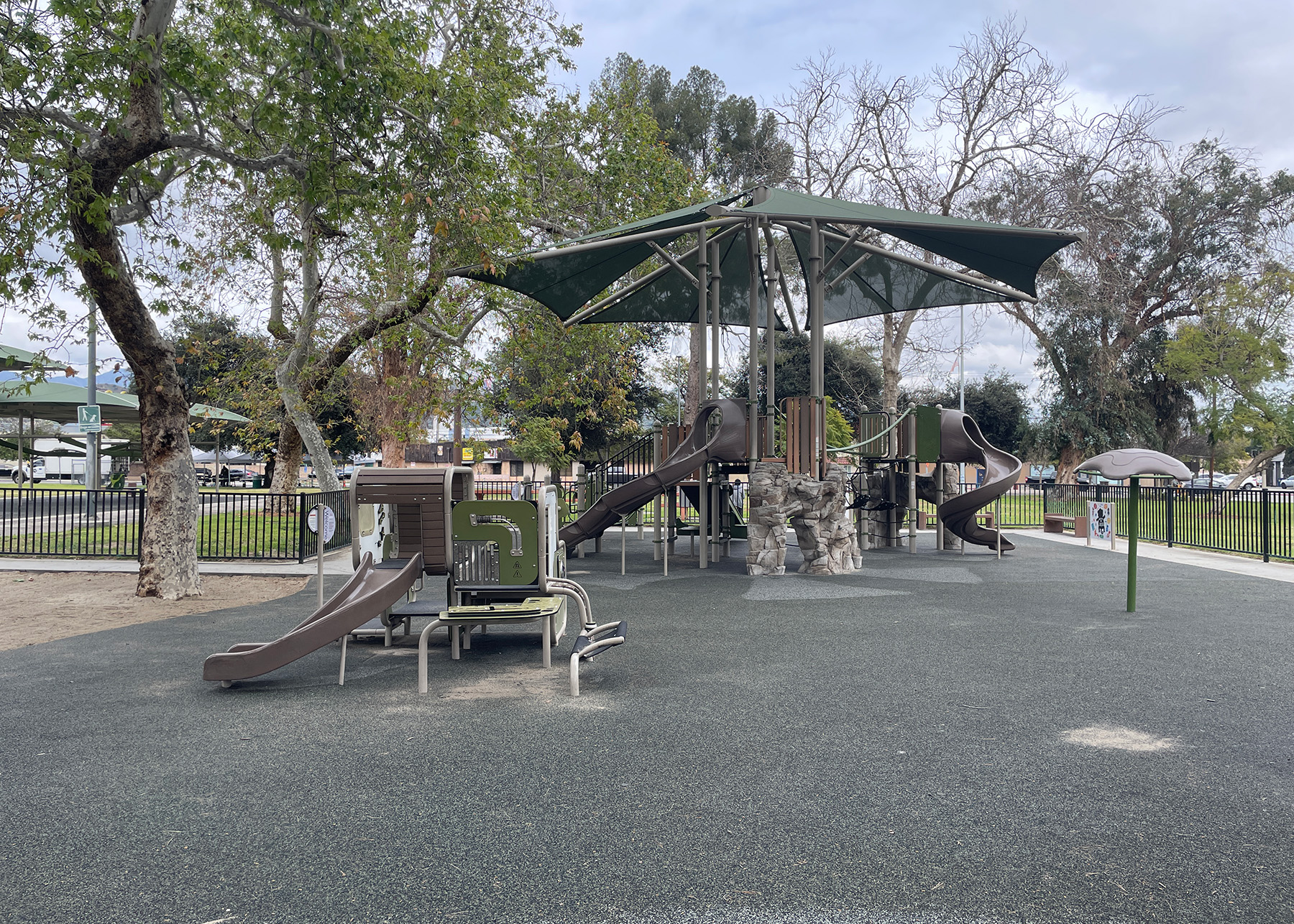By establishing clear, population-based benchmarks, the City can proactively plan for the recreation and park needs of both current and future Angelenos, helping to ensure that every community has access to high-quality recreational opportunities. This chapter outlines level of service standards that will help guide the City’s planning and investment strategies to 2050, providing a foundation for creating a more balanced, inclusive, and sustainable recreation and park system across Los Angeles.
The City of Los Angeles has a robust, distributed public space system that seeks to provide residents with convenient access to amenities and services.
No uniform level of service standards exist for parks or recreational amenities across the country. There are generally two types of standards that communities use to analyze service: population-based standards and access standards. Population-based standards address how many amenities are needed and access-based standards address where amenities are needed, both now and in the future.
The PNA defines population-based standards by amenity. Using the level of service standards to increase access to recreational amenities could result in different types of actions:
The population-based standards provide a snapshot of the level of service provided by current recreation amenities and a road map for addressing the number of amenities in the future. The level of service standards can be used to help prioritize which actions will increase equitable access to recreational amenities for the most residents.
For this Park Needs Assessment, access considerations were incorporated into identifying the 36 prospective park sites that are part of the universe of sites.
Population-Based Standards
On the level of service pages are the recommended level of service standards and future amenity counts to meet the median level of service of LA’s peer cities by 2050.
To help set population-based level of service standards, the most common recreation amenities were looked at through four data points:
Population-based level of service is typically expressed as a ratio of number of amenities to population. The current level of service is based on counts of RAP’s existing amenities.
Level of service for peer cities is based on the Trust for Public Land’s 2024 City Park Facts, which includes self-reported amenity counts for the 100 most populous cities in the country. The median of the peers’ levels of service was used for comparison.
The statistically valid survey conducted as part of this needs assessment asked residents whether they or their households have a need for various outdoor and indoor amenities, and how well those needs are currently being met. Combining these metrics, the priority investment rating (PIR) indicates residents’ relative priorities for investing in these amenities.
National participation trends are based on the Sports and Fitness Industry Association’s 2025 Topline Participation Report, which tracks rates of activity for Americans aged six and older across various recreational activities over time. Participation growth or decline on the following pages represents a weighted average of participation trends across activities that use a particular amenity. While the national trends for amenities are useful, it is important to keep in mind they include numbers from localities that may have very different demographics and climates from Los Angeles.
Some data supports raising the current level of service. Other data supports maintaining or lowering the current level of service.
The following amenities are tracked by the Trust for Public Land annually. This list is not exhaustive of RAP’s park system, as it excludes features such as unprogrammed open space, a highly desired amenity.
| Amenity | Total RAP Count | Metric | Current LOS | Peer Median LOS | Priority Investment Rating | 5-Year Change in Participation | Recommended LOS | # of Amenities by 2050 |
|---|---|---|---|---|---|---|---|---|
| Basketball Hoops | 446 | 1/10,000 | 1.2 | 3.9 | 66 | 28.2 | 3.8 | 1,640 |
| Community Gardens | 8 | 1/1,000 | 0.0 | 0.0 | 127 | 0.002 | 9 | |
| Diamond Fields | 300 | 1/10,000 | 0.8 | 1.2 | 59 | 5.9 | 1.0 | 432 |
| Disc Golf Courses | 2 | 1/100,000 | 0.1 | 0.2 | 51 | 0.2 | 9 | |
| Nature Trails (Miles) | 92 | 1/100,000 | 2.4 | 3.8 | 154 | 28.7 | 3.5 | 151 |
| Off-Leash Dog Parks | 14 | 1/100,000 | 0.4 | 2.0 | 104 | 1.8 | 78 | |
| Park Acreage | 16,000 | 1/1,000 | 4.2 | 6.3 | 10.0 | 43,159 | ||
| Pickleball Courts | 52 | 1/20,000 | 0.3 | 1.1 | 78 | 472.5 | 0.4 | 86 |
| Playgrounds | 447 | 1/10,000 | 1.2 | 1.9 | 90 | 1.9 | 820 | |
| Recreation and Senior Centers | 165 | 1/20,000 | 0.9 | 1.0 | 0.9 | 194 | ||
| Rectangular Fields | 101 | 1/10,000 | 0.3 | 0.9 | 65 | 13.8 | 0.7 | 302 |
| Restrooms | 1,504 | 1/10,000 | 3.9 | 1.6 | 1.6 | 691 | ||
| Skate Parks | 32 | 1/100,000 | 0.8 | 0.7 | 55 | 40.4 | 0.84 | 36 |
| Splashpads | 13 | 1/100,000 | 0.3 | 3.7 | 89 | 3.3 | 142 | |
| Swimming Pools (Outdoor) | 59 | 1/100,000 | 1.5 | 1.5 | 130 | 6.1 | 1.5 | 65 |
| Tennis Courts | 371 | 1/20,000 | 1.9 | 3.2 | 78 | 45.6 | 3.7 | 798 |
| Volleyball Courts | 89 | 1/20,000 | 0.5 | 0.3 | 53 | 4 | 0.4612 | 100 |

